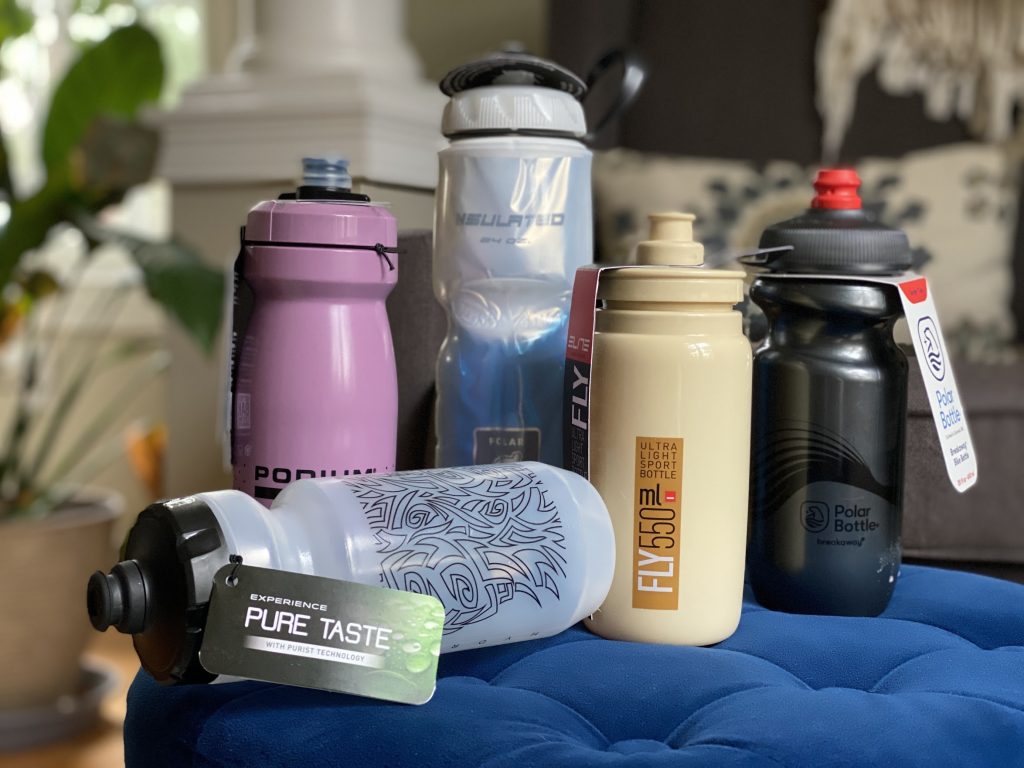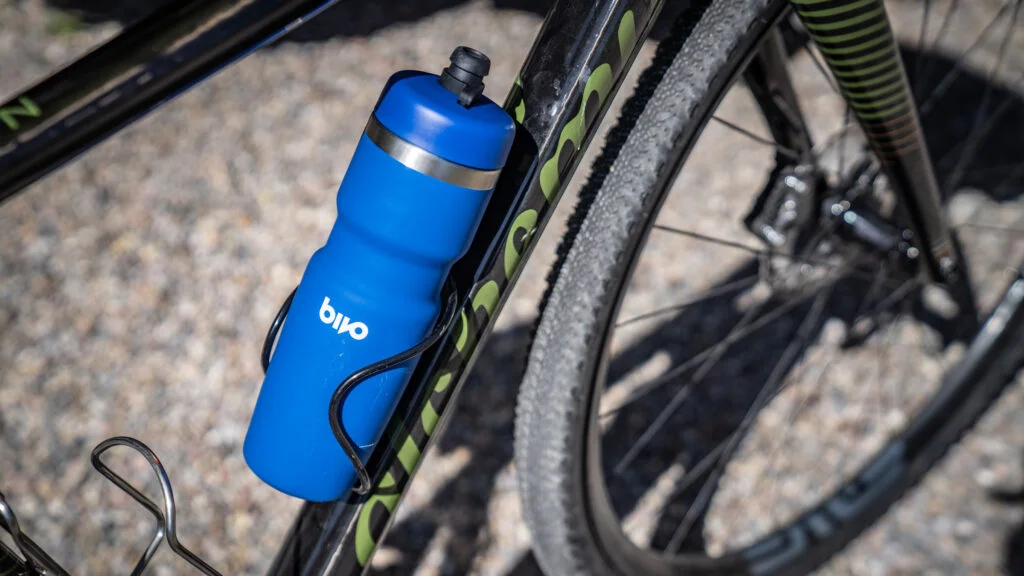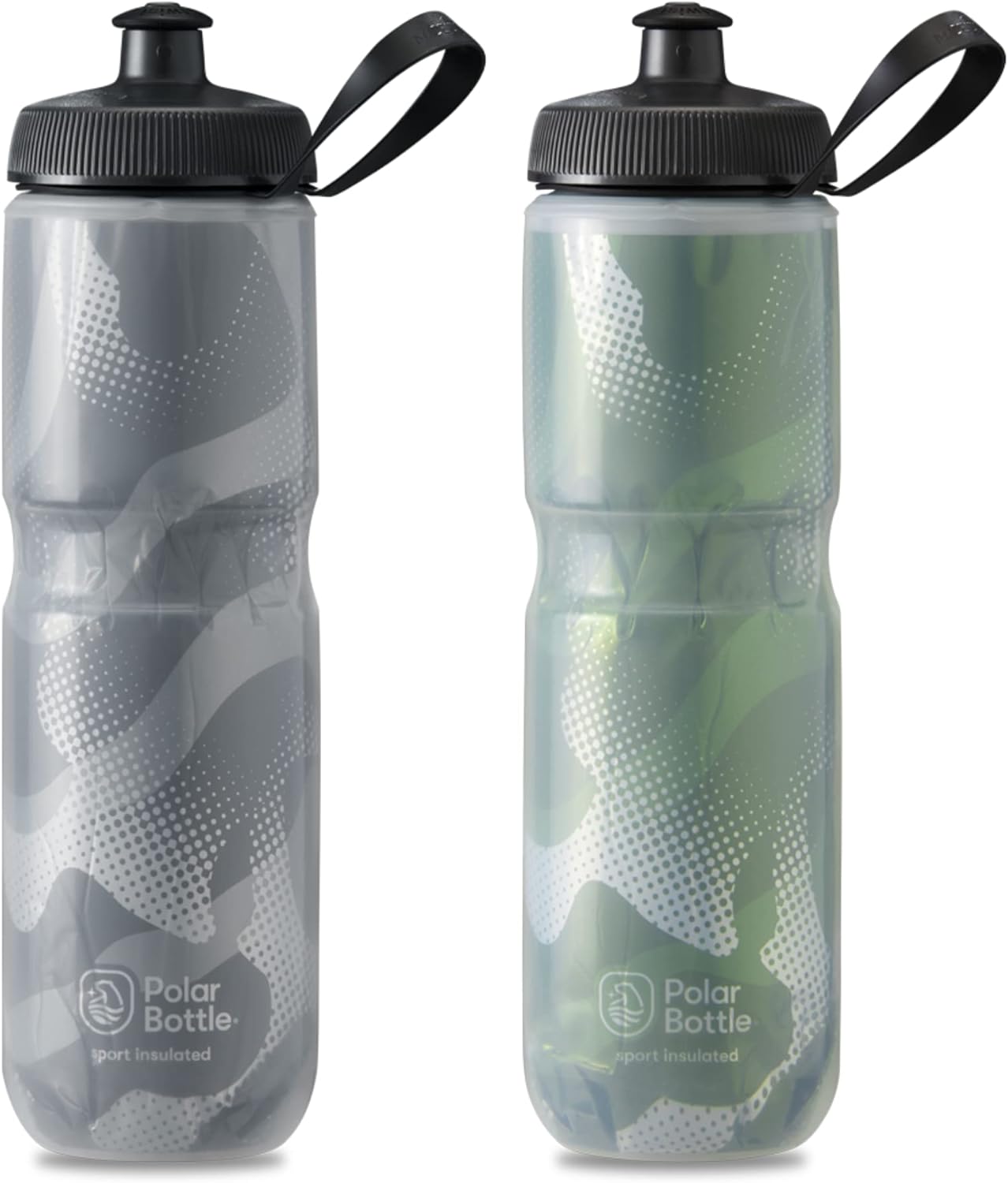Cycling water bottles are an indispensable accessory for cyclists, providing crucial hydration during rides to maintain physical water balance and stamina. These bottles are specifically designed to allow cyclists to easily replenish fluids without stopping, thereby ensuring continuous performance.

Features of Cycling Bottle
Cycling water bottles are specifically designed to cater to the unique needs of cyclists, boasting a range of features that make them an essential accessory for biking enthusiasts. These bottles typically feature an ergonomic design, with a slim, cylindrical shape that fits securely into water bottle cages on bicycles. This design ensures stability during rides, preventing the bottle from falling out even on rough terrains.

One of the key characteristics of cycling water bottles is their ability to facilitate one-handed operation. Many bottles come with a nozzle or bite valve, allowing cyclists to drink water easily while keeping both hands on the handlebars. This feature is crucial for maintaining control and safety, enabling cyclists to stay hydrated without compromising their riding experience.
In addition to their functional design, cycling water bottles are also lightweight and durable. Made from materials such as plastic (PP5 or Tritan) and stainless steel, these bottles are strong and resistant to impacts, yet light enough to minimize additional weight on the bike. This makes them ideal for long rides, where every ounce counts.
Another important feature of cycling water bottles is their ease of cleaning. With smooth interior surfaces and wide openings, these bottles can be thoroughly scrubbed to ensure they remain free from bacteria and other contaminants. Some bottles even come with detachable parts, such as the nozzle or cap, for even easier cleaning and maintenance.
Cycling water bottles are also available in a range of capacities to suit different riding needs. For shorter rides, a smaller bottle may be sufficient to provide adequate hydration. However, for longer rides or more intense workouts, a larger bottle may be necessary to ensure cyclists stay properly hydrated throughout their journey.
A crucial aspect of cycling water bottles is their leak-proof design. Whether the bottle is placed in the water bottle cage or tossed into a backpack, it should be able to withstand the rigors of cycling without leaking. This ensures that cyclists can focus on their ride without worrying about spills or messes.
Material safety is a top priority when it comes to cycling water bottles. These bottles are made from food-grade materials to ensure the water they contain is safe for consumption. Free from harmful substances such as BPA, cycling water bottles provide cyclists with a reliable and healthy way to stay hydrated during their rides.
How A Cycling Water Bottle Is Made
What are the best cycling water bottles?

Material Selection
Plastic Water Bottles: Lightweight and featuring cleverly designed spouts that can be opened with one hand. However, they may have an odor and are not heat-resistant. Plastic bottles come in both soft and hard varieties; soft ones can be squeezed inward, while hard ones maintain their shape.
PP Material: Such as “05” PP (polypropylene), which is the only material that can be safely heated in a microwave. It withstands temperatures up to 130°C and has a melting point of 167°C. While it may lack transparency, it can be reused after careful cleaning, making it an excellent choice for cycling water bottles.
LDPE Material: Known as “04” material, many sports water bottles are made from this. However, it is not heat-resistant and may release harmful chemicals when exposed to temperatures exceeding 110°C.
Metal Water Bottles: Excellent sealing performance with an internal coating for insulation. They can also serve as a defensive tool in emergencies. However, they are heavier (with stainless steel being heavier than aluminum) and prone to dents from impacts. They also have high thermal conductivity.
Aluminum Water Bottles: Lightweight, durable, easy to carry, with good sealing performance. The internal coating prevents mold, preserves freshness, and prevents corrosion. However, aluminum can react with acidic liquids (such as fruit juice, soda, etc.) to produce harmful chemicals. Pure aluminum is also relatively soft and can be easily dented.
Stainless Steel Water Bottles: Free from coating concerns and can be made double-walled for insulation. Double-walled bottles also prevent the outer surface from becoming too hot when filled with boiling water. However, stainless steel bottles are heavier, especially when filled with water. Bicycle water bottle cages may not be able to support the weight, so an aluminum alloy cage is recommended if using a stainless steel bottle.
Capacity Selection
Short-distance Cycling: A single bottle with a capacity between 500ml and 750ml is recommended. This avoids the inconvenience caused by excessive weight.
Long-distance Cycling: Bottles with capacities between 1500ml and 2500ml are recommended. An adult cycling 100 to 150 kilometers a day typically requires 2000ml to 5000ml of water.
Design Considerations
Tightness of the Cap and Body Connection: Since water bottles are usually placed in the bicycle’s water bottle cage, exposed to the air, and close to the ground, dust from the road can easily enter during high-speed riding, leading to the growth of bacteria. Therefore, the tightness of the cap and body connection is also crucial.
Anti-slip and Wear-resistant Design: Such as a skin-like material coating or a slightly matte surface treatment, which can increase grip stability during cycling and prevent the bottle from slipping out of hand.
Spout Design: The spout should be easy to operate and control the water flow speed to avoid inconvenience during cycling.
Maintain Cycling Water Bottle

Maintaining your cycling water bottle is essential to ensure it remains in optimal condition and continues to serve you well during your rides. To keep your water bottle in top shape, follow these steps:
Regular cleaning is crucial. Wash the bottle with a gentle detergent and warm water to remove any bacteria or residue that may have accumulated. Rinse it thoroughly with clean water to ensure no soap residue is left behind. If you notice any unpleasant odors, you can add a small amount of white vinegar or lemon juice, fill the bottle with water, and let it sit for a while before cleaning.
Drying the bottle properly is important to prevent mold growth. After cleaning, make sure the bottle is completely dry by inverting it on a dry towel or using a low-heat setting on a hairdryer. This will help keep the interior of the bottle free from moisture, which can lead to mold and mildew.
Check the bottle’s seal regularly. Inspect the lid or sealing gasket for any signs of wear or damage. If you notice any issues with the seal, such as leaks or difficulty in closing, replace the lid or gasket promptly to ensure the bottle remains leak-proof.
Additionally, protect the bottle from direct sunlight and extreme temperatures. Prolonged exposure to sunlight can cause the material to degrade or warp, while extreme temperatures can affect its performance and lifespan. When not in use, store the bottle in a cool, dry place away from sharp objects or heavy items that could scratch or damage it.
By following these maintenance steps, you can ensure that your cycling water bottle stays clean, safe, and easy to use, enhancing your overall cycling experience with comfort and convenience.
What Brand Of Cycling Water Bottle Is Good?
A good cycling water bottle should be easy to grip, durable, and have a secure but accessible nozzle for drinking on the go. Here are a few popular brands that cyclists swear by:
CamelBak Podium
Known for its BPA-free construction, CamelBak’s Podium bottle has a Jet Valve nozzle that prevents spills and offers excellent water flow. The bottle is also easy to squeeze, which helps with hydration during rides.
Elite Fly
Lightweight and used by many pro cycling teams, the Elite Fly bottle is praised for its ergonomic shape, making it easy to grip and squeeze. It’s one of the lightest on the market, which can be a plus for competitive cyclists.

Elite Fly 750ml Bottle (Black, Tex) – Ultra-Lightweight Textured Cycling Water Bottle
Polar Bottle Insulated
Known for its insulation, the Polar Insulated Bottle keeps drinks cold for longer rides. Many cyclists appreciate the lightweight, BPA-free materials and durability.

Polar Bottle Sport Insulated Water Bottle – Leak Proof Water Bottles Keep Water Cooler 2X Longer Than a Regular Reusable Water Bottle
Takeya Actives
Although a bit bulkier, Takeya bottles are stainless steel and keep drinks cold for long periods. They come with a leak-proof spout lid, which is handy for cycling breaks.

Takeya Actives 24 oz Vacuum Insulated Stainless Steel Water Bottle with Spout Lid, Premium Quality, Onyx
Schwinn Throttle
An affordable and reliable option, the Schwinn Throttle is designed for easy grip and secure handling. It’s budget-friendly and BPA-free, making it a popular entry-level choice.





